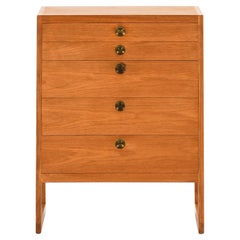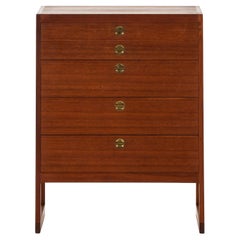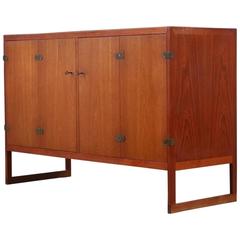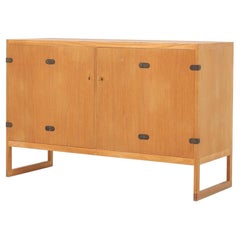Borge Mogensen Bm57
Vintage 1950s Danish Scandinavian Modern Commodes and Chests of Drawers
Brass
Vintage 1950s Danish Scandinavian Modern Commodes and Chests of Drawers
Brass
Recent Sales
Mid-20th Century Danish Scandinavian Modern Cabinets
Mid-20th Century European Scandinavian Modern Cabinets
Oak
Mid-20th Century Danish Scandinavian Modern Sideboards
Brass
Mid-20th Century Danish Scandinavian Modern Sideboards
Teak
Mid-20th Century Danish Scandinavian Modern Cabinets
Brass
Vintage 1950s Danish Scandinavian Modern Cabinets
Brass
Mid-20th Century Danish Scandinavian Modern Credenzas
Rosewood
Mid-20th Century Danish Scandinavian Modern Credenzas
Rosewood
Vintage 1950s Danish Scandinavian Modern Sideboards
Brass
Mid-20th Century Danish Scandinavian Modern Credenzas
Brass
Mid-20th Century Danish Scandinavian Modern Sideboards
Vintage 1950s Danish Scandinavian Modern Commodes and Chests of Drawers
Teak
Vintage 1950s Danish Scandinavian Modern Cabinets
Brass
20th Century Danish Mid-Century Modern Cabinets
Brass
Mid-20th Century Danish Mid-Century Modern Sideboards
Teak
Mid-20th Century Danish Scandinavian Modern Credenzas
Rosewood
Vintage 1950s Danish Scandinavian Modern Commodes and Chests of Drawers
Brass
Vintage 1950s Danish Scandinavian Modern Sideboards
Brass
Vintage 1950s Danish Scandinavian Modern Sideboards
Brass
Vintage 1950s Danish Scandinavian Modern Cabinets
Brass
Vintage 1950s Danish Scandinavian Modern Cabinets
Brass
Mid-20th Century Danish Scandinavian Modern Sideboards
Teak
Mid-20th Century Danish Mid-Century Modern Sideboards
Brass
People Also Browsed
21st Century and Contemporary Italian Mid-Century Modern Wall Lights and...
Brass, Aluminum, Metal
2010s South African Minimalist Pedestals
Hardwood
21st Century and Contemporary Swedish Mid-Century Modern Table Lamps
Textile
Mid-20th Century Danish Scandinavian Modern Cabinets
Oak
Mid-20th Century Finnish Mid-Century Modern Dining Room Sets
Birch
21st Century and Contemporary American Mid-Century Modern Flush Mount
Brass
Vintage 1930s Swedish Scandinavian Modern Commodes and Chests of Drawers
Fruitwood
Vintage 1930s Swedish Scandinavian Modern Cabinets
Elm, Plywood
Vintage 1950s Danish Scandinavian Modern Sideboards
Brass
Vintage 1950s Swedish Scandinavian Modern Cabinets
Brass
Vintage 1960s Swedish Mid-Century Modern Commodes and Chests of Drawers
Oak
20th Century Danish Scandinavian Modern Lounge Chairs
Sheepskin
Vintage 1950s Cabinets
Teak
Vintage 1950s Danish Scandinavian Modern Credenzas
Steel
Vintage 1950s Danish Scandinavian Modern Desks and Writing Tables
Wood
Borge Mogensen Bm57 For Sale on 1stDibs
How Much is a Borge Mogensen Bm57?
Børge Mogensen for sale on 1stDibs
Among the great mid-20th century Danish furniture designers, Børge Mogensen distinguished himself with his faith to traditional values of craftsmanship and honesty of materials.
While peers such as Hans Wegner, Finn Juhl and Arne Jacobsen designed some of the most striking and now iconic furnishings of the era, Mogensen focused on making chairs, sofas and other pieces that were simple, durable and comfortable — and in the long run perhaps more useful and better loved.
Mogensen studied under and later worked for Kaare Klint, a master cabinetmaker whose chief tenets were quality of construction and simplicity of line. Klint was a classicist, who believed that furniture forms should evolve from those of historical models. So, too, in his way was Mogensen, as two of his best-known earlier pieces attest.
His 1945 Spokeback sofa, with hinged arms that can be lowered to facilitate lounging, is a reinterpretation of the venerable Knole settee. With the oval silhouette of its plywood backrest and waterdrop-shaped cutouts, Mogensen’s Shell chair, designed in 1949, can be seen as a novel take on early 19th-century Empire side chairs.
Yet Mogensen shared the aesthetical sensibilities of his most forward-looking colleagues. His cabinets deploy the same spare geometries and lushly figured woods as those of Ludwig Mies van der Rohe and his disciple Florence Knoll, the chief difference being that Mies and Knoll used chrome steel for the frames and legs of their pieces. The brawny oak frames and slung leather seats and backrests of Mogensen’s Hunting chair (1950) and Spanish chair (1958) display the same hefty construction and appreciation of natural materials seen in the work of Charlotte Perriand and Sergio Rodrigues.
Mogensen designed for function more than sculptural effect. While his chairs may not be the first pieces in a décor to draw the eye, they are often the first to draw in those looking for a comfortable seat.
Find vintage Børge Mogensen dining tables, bookcases and other Scandinavian modern furniture for sale on 1stDibs.
A Close Look at Scandinavian Modern Furniture
Scandinavian modernism is perhaps the warmest and most organic iteration of modernist design. The work of the designers associated with vintage Scandinavian modern furniture was founded on centuries-old beliefs in both quality craftsmanship and the ideal that beauty should enhance even the humblest accessories of daily life.
ORIGINS OF SCANDINAVIAN MODERN FURNITURE DESIGN
- Emerged in the 1930s
- Scandinavian design and Nordic design originated primarily in Denmark, Sweden, Finland, Iceland and Norway
- Introduced in the United States in mid-20th century
- Informed by the Bauhaus; influenced American mid-century modernism
CHARACTERISTICS OF SCANDINAVIAN MODERN FURNITURE DESIGN
- Bold, clean lines and simple, sturdy symmetries
- Use of natural materials — native woods such as pine, ash and beech
- Open, airy spaces
- Promotion of functionality
- Emphasis on craftsmanship; rooted in cabinetry profession and traditional construction techniques
- Minimal ornamentation (little to no embellishment)
- A neutral or light color palette owing to prominence of light woods
SCANDINAVIAN MODERN FURNITURE DESIGNERS TO KNOW
- Alvar Aalto
- Hans Wegner
- Kaare Klint
- Arne Jacobsen
- Greta Magnusson Grossman
- Finn Juhl
- Arne Vodder
- Verner Panton
ICONIC SCANDINAVIAN MODERN FURNITURE DESIGNS
VINTAGE SCANDINAVIAN MODERN FURNITURE ON 1STDIBS
The gentle, organic contours that are typical of Scandinavian design appear in the furnishings and decor created by Danish, Finnish and Swedish designers not as a stylistic gesture, but rather as a practical, ergonomic — and, as importantly, elegant — response to the human form.
Each nation produced exceptional talents in all areas of the applied arts, yet each had its forté. Sweden was home to Greta Magnusson Grossman and Bruno Mathsson — creators of the classic Grasshopper lighting series and Berlin daybed, respectively — but the country excelled most notably at ceramics. In the 1920s at the great Gustavsberg porcelain manufactory, Wilhelm Kåge introduced pieces in the Scandinavian style based on influences from folklore to Cubism; his skills were passed on to his versatile and inspired pupils Berndt Friberg and Stig Lindberg.
Likewise, Finland produced a truly ingenious Scandinavian modern furniture designer in the architect Alvar Aalto, a master at melding function and artistic form in works like the Paimio chair, created in collaboration with his first wife, Aino. Yet Finnish glassware was pre-eminent, crafted in expressive, sculptural designs by Tapio Wirkkala and Timo Sarpaneva.
The Danes excelled at chairs. Hans Wegner and Arne Jacobsen were exemplars of the country’s facility with wood, particularly teak.
Wegner created such iconic pieces as the Round chair and the Wishbone chair; Jacobsen — while the revolutionary architect and furniture innovator produced the best-selling plywood Ant chair — designed two classic upholstered pieces of the 1950s: the Swan chair and Egg chair. The list of great Danes could go on and on, including Finn Juhl, a stylistic maverick and maker of the bold Chieftain chair; Poul Kjaerholm, with his lean metal-and-rattan aesthetic; and Verner Panton, who introduced a vibrant Pop note into international design.
Today, decades after their heyday, the prolific, ever-evolving Scandinavian modernists continue to amaze and delight, and interior designers all over the world use their pieces to bring warmth to any given space.
On 1stDibs, you will note both instantly recognizable vintage Scandinavian modern chairs, sofas, rugs and tables — those that have earned iconic status over time — and many new discoveries.
Finding the Right Case Pieces And Storage Cabinets for You
Of all the vintage storage cabinets and antique case pieces that have become popular in modern interiors over the years, dressers, credenzas and cabinets have long been home staples, perfect for routine storage or protection of personal items.
In the mid-19th century, cabinetmakers would mimic styles originating in the Louis XIV, Louis XV and Louis XVI eras for their dressers, bookshelves and other structures, and, later, simpler, streamlined wood designs allowed these “case pieces” or “case goods” — any furnishing that is unupholstered and has some semblance of a storage component — to blend into the background of any interior.
Mid-century modern furniture enthusiasts will cite the tall modular wall units crafted in teak and other sought-after woods of the era by the likes of George Nelson, Poul Cadovius and Finn Juhl. For these highly customizable furnishings, designers of the day delivered an alternative to big, heavy bookcases by considering the use of space — and, in particular, walls — in new and innovative ways. Mid-century modern credenzas, which, long and low, evolved from tables that were built as early as the 14th century in Italy, typically have no legs or very short legs and have grown in popularity as an alluring storage option over time.
Although the name immediately invokes images of clothing, dressers were initially created in Europe for a much different purpose. This furnishing was initially a flat-surfaced, low-profile side table equipped with a few drawers — a common fixture used to dress and prepare meats in English kitchens throughout the Tudor period. The drawers served as perfect utensil storage. It wasn’t until the design made its way to North America that it became enlarged and equipped with enough space to hold clothing and cosmetics. The very history of case pieces is a testament to their versatility and well-earned place in any room.
In the spirit of positioning your case goods center stage, decluttering can now be design-minded.
A contemporary case piece with open shelving and painted wood details can prove functional as a storage unit as easily as it can a room divider. Alternatively, apothecary cabinets are charming case goods similar in size to early dressers or commodes but with uniquely sized shelving and (often numerous) drawers.
Whether you’re seeking a playful sideboard that features colored glass and metal details, an antique Italian hand-carved storage cabinet or a glass-door vitrine to store and show off your collectibles, there are options for you on 1stDibs.



